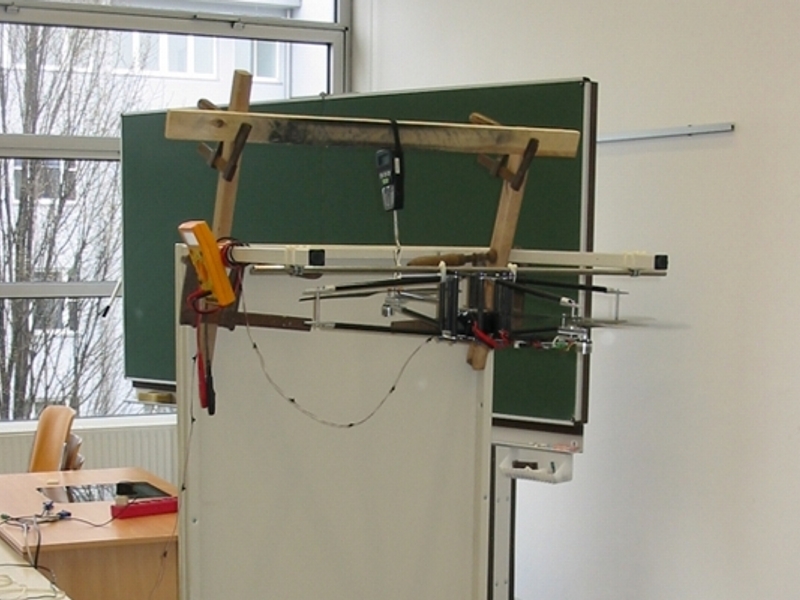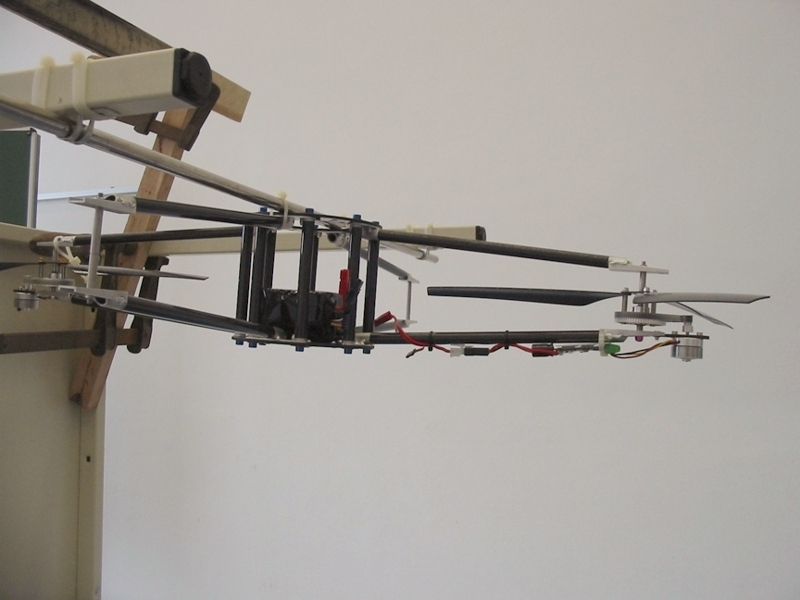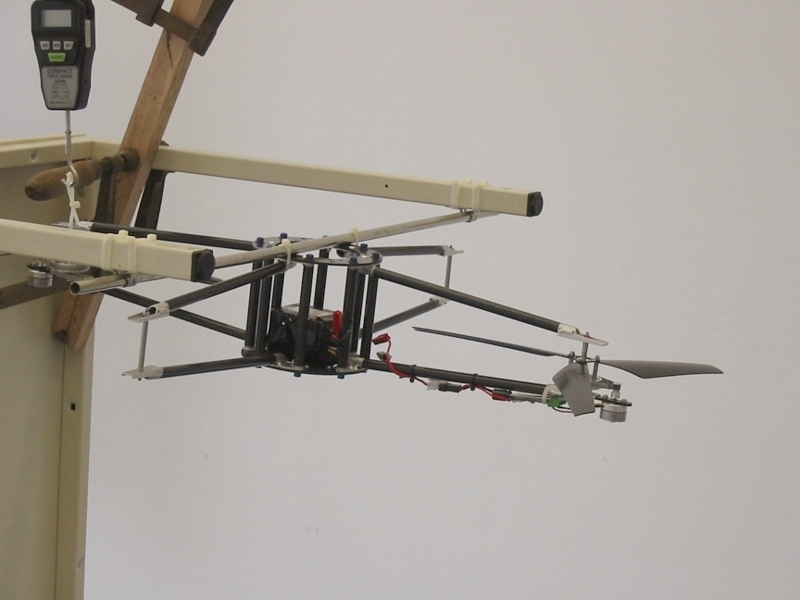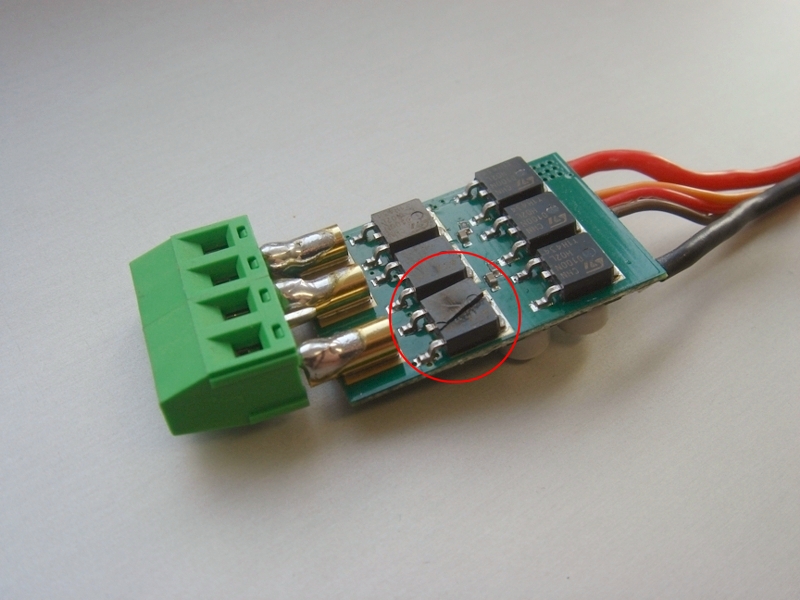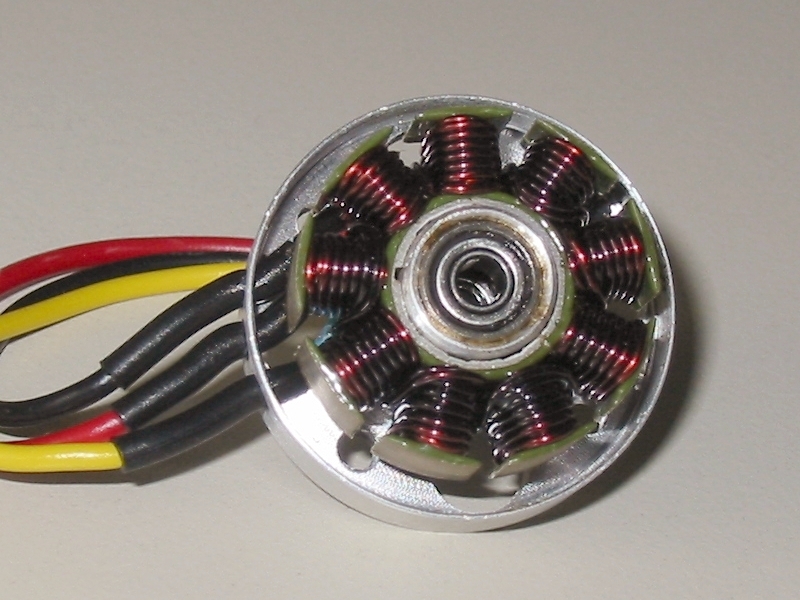JAviator V1 Propulsion System Tests
Thrust Determination
Propulsion system tests are unavoidable in order to determine the essential physical data required for designing the closed-loop controller. Honestly, our test bench is neither very attractive nor really competitive to state-of-the-art equipment used for this purpose. Nevertheless, intuitive improvisation in experimental research is the key to success! Of course we wanted to find out the real capacity of our propulsion system design, and therefore, had to torture the motors up to their limit. It turned out that the most sensitive parts are actually the brushless-motor controllers, which hardly forgive ride-outs into danger zone. They usually indicate their readiness by a sequence of beeps after being supplied with power. However, once exceeding their limit just for a few seconds and they will never again say 'hello' to you. After upgrading with much stronger motor controllers we finally could determine the maximum thrust, holding for several minutes before the motor winding burnt through. We are very sorry Armin, but this little motor generated an amazing thrust of almost 1,500g (!) until saying goodbye forever.
Video Clips
The following video clips report on some of the many measurements we performed using two prototype motors with slightly different windings. The strong motor is indeed very attractive regarding its amazing thrust, however, it consumes a great deal of power. So we decided for the gentle motor since it perfectly meets our power consumption estimates and also generates much more thrust than originally expected.
Experimental research sometimes demands experimental evidence. Consequently, the following experiments had to be conducted, they were a simple 'must', and there was no way to get around this.
Acknowledgements
Many thanks to Johann Kraihammer for helping with the test bench setup.
